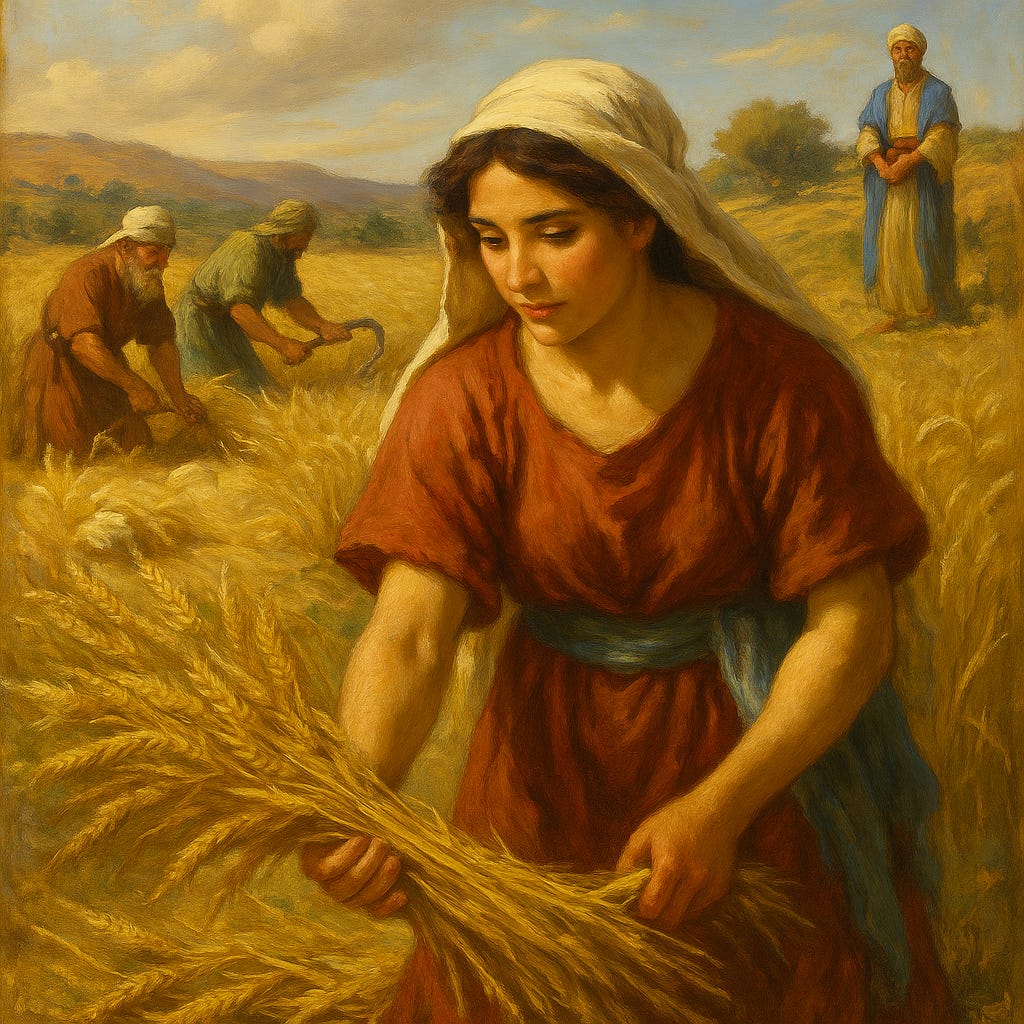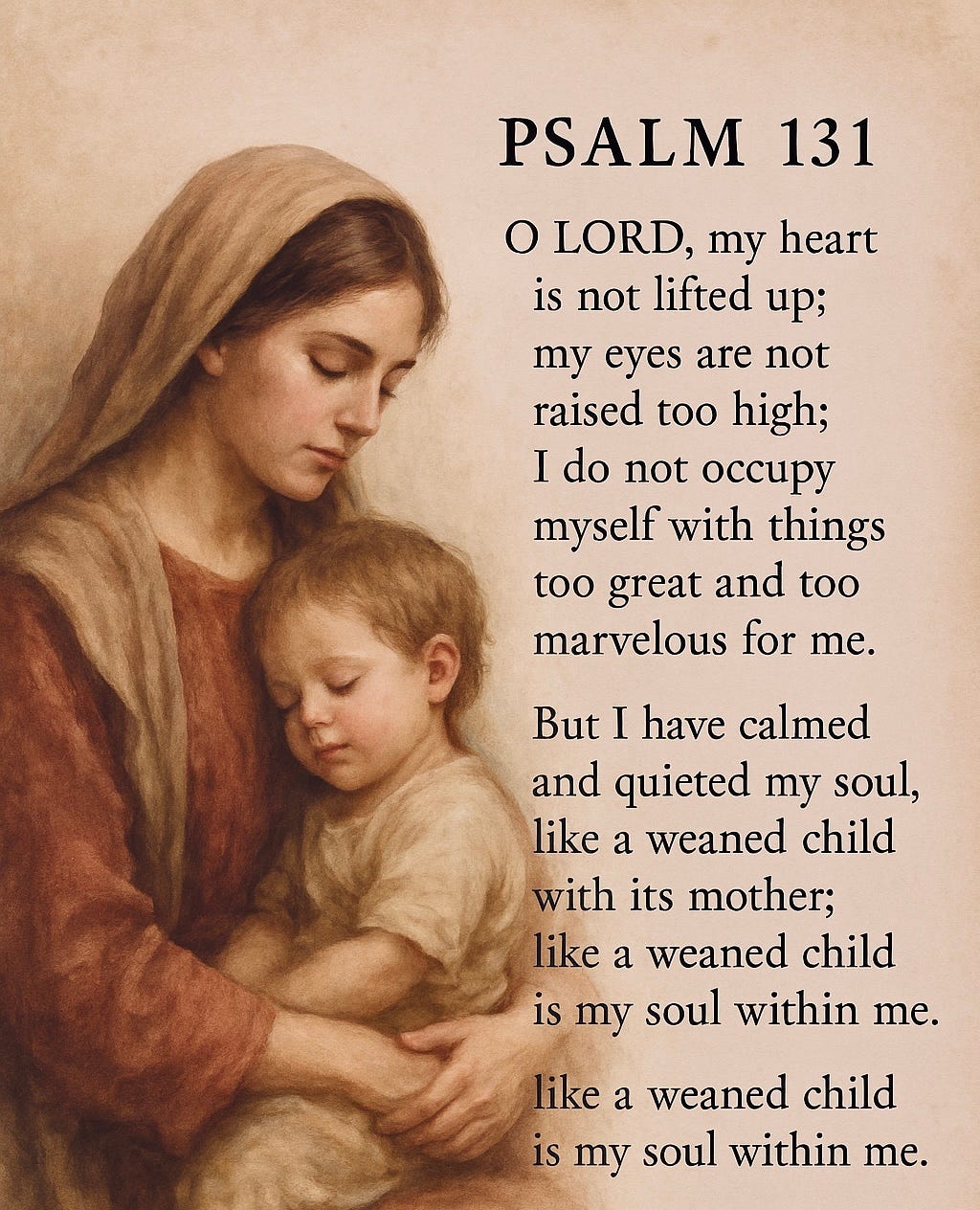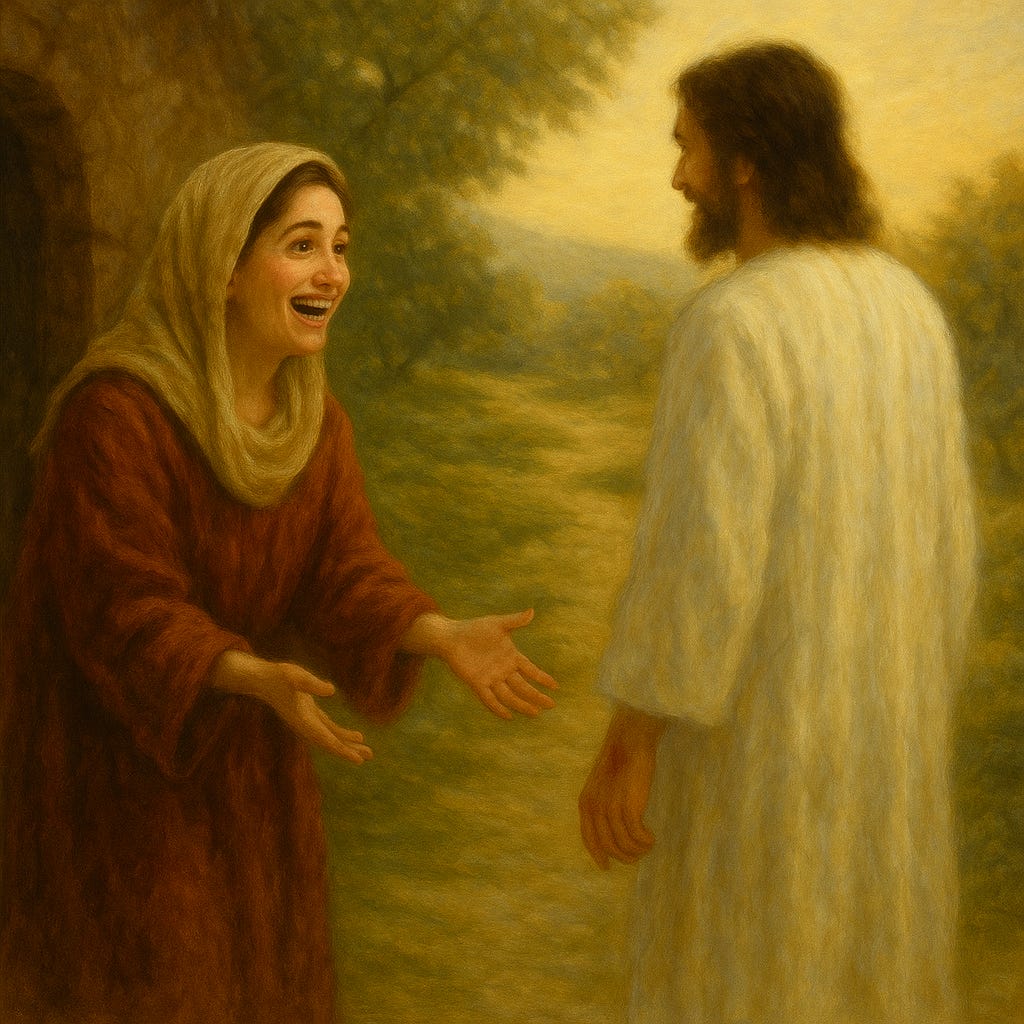Essential Partners: Women, the Spirit, and the Gentle Strength of God
From Formlessness to Flourishing: Women, the Spirit, and the Beauty of God’s Design
From Formlessness to Flourishing in Beauty
In the beginning, there was formlessness….emptiness stretched over the deep. Then came the Word, and everything changed.
God spoke, and thriving took hold of the void. Light subdued the darkness as waters gathered and held their boundaries.
The land rose and grew green as the sky was filled with wings, and the sea sparkled with life.
The creation unfolded in rhythm, each movement adding shape and meaning—turning what was empty into frolicking abundance.
And after each act, God paused, looked, and named it tov.
That Hebrew word means more than “good.” It speaks of wholeness, harmony, and beauty—things as they were meant to be, flourishing with life. Its root (ט-ו-ב) carries the sense of pleasant, fitting, abundant, radiant. When God calls creation tov, He is saying: “This is complete. This is beautiful. This delights My heart.”
Light was tov.
The seas and the land were tov.
The fruiting trees and living creatures were tov.
Even time was made holy when God blessed the seventh day and rested. And space, too, made separate and holy.
This garden was planted by God’s own hand, a Holy place of ordered beauty set apart for abundant life.
Into this venerated garden, God placed the man, calling him to cultivate and keep what God had made as a sanctifying and worshipful participant.
But then, something startling. God speaks another word:
“It is not good for the man to be alone.” (Genesis 2:18)
The first ‘not good’ in the story isn’t about sin but solitude.
Adam named every form of life presented to him.
Yet none mirrored his essence. Creation in its fullness was deemed unfinished by its initiator.
The absence is answered by drawing life from life rather than shaping another lump of clay.
The text captures God’s intent speaking in a language not of hierarchy but of harmony.
Both Jewish and Christian voices have cherished this truth for centuries.
“Eve was not made out of his head to top him, nor out of his feet to be trampled upon by him, but out of his side to be equal with him, under his arm to be protected, and near his heart to be beloved.”— Matthew Henry, Commentary on the Whole Bible (Genesis 2)
“Why was she created from his side? So that she should be neither proud nor humiliated; not from his head, lest she think herself above him, nor from his feet, lest she be trampled upon, but from his side, to be near him—equal in dignity and honor.”— Genesis Rabbah 18:2
The woman is not formed as echo or subordinate.
She is companion standing face-to-face as equal, corresponding, strong, and necessary.
This is the final flourish and pinnacle of the beautiful creation.
The crescendo of the song. Her presence turns “not good” back into tov, restoring beauty where incompleteness lingered.
Before law, before covenant, before brokenness, there were two image-bearers sharing one life and one call, each essential to the fullness of God’s intent.
Echad: The Mystery of Oneness
The Shema is not just a verse, it is the heartbeat of Israel’s faith. For thousands of years, it has been whispered at dawn and spoken before sleep, the first prayer Jewish children learn as toddlers and the last words on the lips of the dying:
“Hear, O Israel: The Lord our God, the Lord is one (echad).” (Deuteronomy 6:4)
When Rabbi Akiva was condemned to death and tortured by the Romans, he recited the Shema with unwavering devotion. His students cried out, “Master, even now?”
“All my life I have been troubled by this verse: ‘You shall love the LORD your God… with all your soul,’ which means even if He takes your soul. I have wondered: When will I have the opportunity to fulfill it? Now that I have the opportunity, shall I not fulfill it?”— Berakhot 61b
He prolonged the word echad—“one”—until his soul departed on that single syllable.
To this day, devout Jews recite it morning and night. It has shaped identity for centuries because it proclaims the foundation of everything: God is one. There is no other.
Jesus reiterated the same prayer as the greatest commandment, and He joined it with another:
“Hear, O Israel: The Lord our God, the Lord is one.Love the Lord your God with all your heart and with all your soul and with all your mind and with all your strength.’The second is this: ‘Love your neighbor as yourself.’ There is no commandment greater than these.”— Mark 12:29–31
And the very first neighbor God gave to humanity was woman.
In his Sermons on the Ten Commandments, Luther explicitly calls the wife “the nearest neighbor”:
“After God, there is no higher neighbor than your wife. She is your most intimate and closest companion on earth.”— Martin Luther, Sermon on the Ten Commandments
Augustine does not use the word neighbor in this way in his surviving works, but he insists that marriage is the first society, and the law of love applies there before anywhere else:
“The first natural bond of human society is that of husband and wife.”— On the Good of Marriage, Chapter 1
This is widely interpreted as: before community and state, the command to love one’s neighbor begins at home, with the spouse.
The very first neighbor God gave was the woman, drawn from man’s side, near his heart, to walk with him in shared life.
And here the Shema’s oneness whispers its mystery again: the God who is One calls us to a oneness of love, first toward Himself, and then toward the one nearest to us.
From this union flows every other bond of society, every other act of neighbor-love, echoing the harmony God intended from the beginning.
But the Hebrew word echad carries a depth we often miss. It does not mean a flat, numerical “one.” It means a oneness made of distinct parts, a unity that holds difference in perfect harmony.
This same word appears in the first marriage covenant:
“The two shall become one (echad) flesh.” (Genesis 2:24)
This is not sameness. It’s a weaving together of difference—a covenant where love makes two one without erasing either. It mirrors the very nature of God Himself, who is not solitary but Triune: Father, Son, and Spirit, distinct, yet utterly one.
And when Scripture says humanity is made in God’s image (Genesis 1:27), and then immediately speaks of male and female, it signals this truth: the image of God is called not in isolation, but in relationship.
Man and woman together echo the divine life: a unity that gives life, a communion that brings forth creation’s song.
It is this original design that Jesus Himself reaffirmed:
“Have you not read,” He replied, “that at the beginning the Creator ‘made them male and female,’ and said, ‘For this reason a man will leave his father and mother and be united to his wife, and the two will become one flesh’? So they are no longer two, but one flesh. Therefore what God has joined together, let no one separate.”— Matthew 19:4–6 (cf. Mark 10:6–9)
ʿEzer K’negdo: An Equal Partner in Strength
God names the woman ʿezer k’negdo, a phrase too rich to be reduced to “helper.”
ʿEzer (עֵזֶר) means help or strength. Most often, it describes God Himself:
“The Lord is my help (ʿezer) and my shield.” (Psalm 33:20)
This is not weakness. It is indispensable strength—the kind that rescues, sustains, and protects.K’negdo (כְּנֶגְדּוֹ) means corresponding to, face-to-face, equal and opposite.
Together, the phrase means:
“An essential ally, equal in dignity, strong in presence, standing face-to-face.”
This is not hierarchy but harmony. A sharing the holy work of cultivating life and guarding what is sacred.
The Mystery of the Side
The way God brings forth the woman is unlike anything else in creation. Drawn not from the earth like the beasts, but from the living side of man.
The early Church Fathers saw this as a foreshadowing of Christ:
“If Adam was a figure of Christ, the sleep of Adam was the death of Christ who was to come. For when He slept on the cross, He brought forth from His side the Church, the true mother of the living.”— Tertullian
When the spear pierced His side, water and blood flowed out (John 19:34)—signs of baptism and Eucharist, sacraments of birth and life. From His wounds came the Bride, just as Eve came from Adam’s.
“Adam’s deep sleep signified the death of Christ, and when He was asleep on the cross, the spear opened His side, so that the sacraments might flow forth, and the Church might be formed.”— Augustine
Creation, the Cross, and Pentecost are one continuous arc of love: God entering vulnerability to bring forth beauty, union, and joy.
The Gentle Strength of God
The strength of woman reflects the heart of God Himself. Scripture dares to speak of Him with maternal imagery:
El Shaddai – often linked to a root meaning “breast,” evoking God’s nurturing abundance (Genesis 17:1).
Rechem – the word for “womb,” from which rachamim (mercy, compassion) flows.
“As a mother comforts her child, so I will comfort you.” (Isaiah 66:13)
And then there is Jesus:
“Come to Me, all who are weary…for I am gentle and humble in heart.” (Matthew 11:28–29)
Gentle—but not fragile. This is the One who stilled storms, cast out darkness, and broke death open from the inside. His gentleness is not weakness. It is strength under love’s command.
The Spirit, too, comes as Comforter and Advocate…..soft as breath, strong as fire. This is the pattern women echo: strength that shelters, wisdom that orders chaos, love that steadies the trembling world. And this strength is never human alone. It is the Spirit of God, poured out like oil, resting on those who trust Him. Isaiah foresaw the Messiah anointed with the fullness of that Spirit—the same Spirit who was promised at Pentecost and now dwells in us.
The Spirit’s Sevenfold Gifts in Women
Isaiah 11 speaks of the Spirit resting on the Messiah with wisdom, understanding, counsel, might, knowledge, reverence, and delight in the Lord. These same gifts shimmer through the lives of women in Scripture. At Pentecost, Peter proclaimed Joel’s prophecy fulfilled:
“Your sons and your daughters will prophesy.” (Acts 2:17)
From Genesis to Revelation, women partnered with God to protect life, speak truth, and usher peace into chaos. Here are their names, their Scriptures, and the Spirit’s gifts reflected in their lives:
Mothers and Matriarchs
Eve – Promise of redemption. (Genesis 3:15, 20) Hope – light after loss.
Sarah – Mother of promise. (Genesis 21:1–3; Hebrews 11:11) Faithfulness – waiting on God’s timing.
Hagar – Named God “El Roi.” (Genesis 16:7–13) Comfort – seen by God in the wilderness.
Rebekah – Secured Jacob’s blessing. (Genesis 27:1–29) Wisdom – discerning the covenant line.
Leah & Rachel – Bearers of tribes. (Genesis 29–35) Endurance & Love – honored in redemption.
Tamar – Preserved the Messianic line. (Genesis 38) Righteousness – covenant loyalty at great cost.
Deliverers and Leaders
Shiphrah & Puah – Defied Pharaoh’s decree. (Exodus 1:15–21) Courage – protecting life in chaos.
Miriam – Led worship by the sea. (Exodus 15:20–21) Praise – lifting faith above fear.
Deborah – Judge and prophetess. (Judges 4–5) Counsel & Might – wisdom for war, voice for peace.
Jael – Ended tyranny with boldness. (Judges 4:17–22) Decisive action – securing safety for God’s people.
Faithful in Exile
Ruth – Loyal redeemer’s line. (Ruth 1–4) Gentleness – love that restores futures.
Hannah – Prayed and surrendered Samuel. (1 Samuel 1) Prayer – birthing God’s purposes in tears.
Abigail – Peacemaker in crisis. (1 Samuel 25) Wisdom – stopping bloodshed with grace.
Esther – Risked her life for her people. (Esther 4:14) Courage & Favor – for such a time as this.
In the Fullness of Time
Mary (Mother of Jesus) – Bore the Word made flesh. (Luke 1:26–38) Grace – surrender that changed history.
Elizabeth – Blessed with joy. (Luke 1:39–45) Joy – faith that speaks blessing.
Anna – Saw the Messiah in the temple. (Luke 2:36–38) Revelation – eyes that recognized salvation.
First Witnesses of Resurrection
Mary Magdalene – First to proclaim the risen Lord. (John 20:1–18) Devotion – love that outlasts fear.
Samaritan Woman – Evangelist in her city. (John 4:4–30) Truth – bringing living water to others.
Mary of Bethany – Anointed Jesus. (John 12:1–8) Worship – beauty poured out before the cross.
Martha – Confessed Christ as Lord. (John 11:20–27) Faith – steady in the face of death.
Women of the Early Church
Lydia – Opened her home to the Gospel. (Acts 16:13–15) Hospitality – creating space for the kingdom.
Priscilla – Teacher and mentor. (Acts 18:24–26) Understanding – explaining the way fully.
Phoebe – Deacon and benefactor. (Romans 16:1–2) Faithfulness – entrusted with truth.
Junia – Apostle honored among leaders. (Romans 16:7) Boldness – carrying authority in humility.
Why This Matters Now
These women were never peripheral. They were gentle protectors, wise counselors, and anchors of peace when chaos loomed. Their strength was not loud, but it was unshakable—the same kind of strength seen in Christ, who knelt to wash feet and then rose to conquer death.
Jesus said:
“Blessed are the peacemakers, for they will be called children of God.” (Matthew 5:9)
Gentle strength is not weakness. It is the power of love ordering the world toward wholeness.
Closing Benediction
Daughters of God, your calling is not small. You bear the image of the Creator and the gifts of His Spirit—wisdom and counsel, courage and tenderness. Rise in love. Bring order where there is chaos. Speak peace into fear. Build beauty where the world is broken. For such a time as this, the kingdom needs your gentle strength—the very strength of God, who shelters, nourishes, and redeems.




